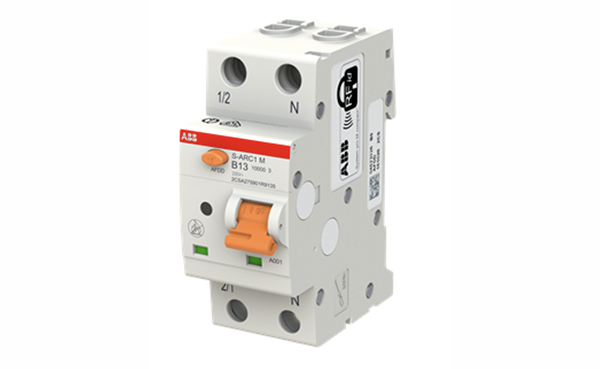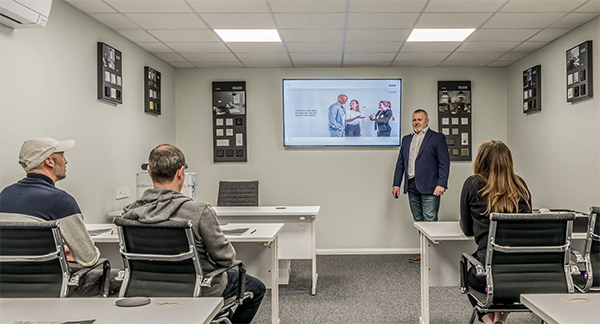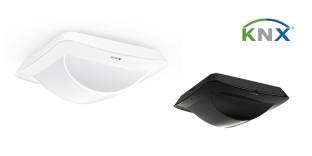
Simon Buddle explains how, with a little training, the electrician’s skills can be expanded to include KNX installation and programming, thereby benefitting their business and the industry as a whole.
Today, everything is a computer in disguise. From the cooker, washing machine, all the way through to our terrifyingly powerful laptops and desktop machines. The computer has become an integral part of everyone’s life. The processing power on board most household devices could have easily run the Apollo 11 spacecraft. I recall programming one particular AMX control system and running out of memory to write to; 64 kiloBytes (64kB) was not enough. An order was placed for a 256kB chip and the world carried on. The Apollo Guidance Computer had 32 kilobits (32kb or 4kB) of RAM and 72kb (9kB) of ROM.

Computers and the trades
For me, 1987 was a life-defining year. I moved cities, changed career, and went back to school – evening classes to be precise. I had been used to working with morse code and HF antennas and suddenly I arrived at a workplace that had computers. I had only ever seen them on TV before, mostly on the bridge of the Starship Enterprise in the TV series Star Trek, where the crew were talking to them – ‘That will never catch on’, I thought. The evening classes were weekly for 2 hours and focused on computer programming using what was known as the ‘Basic’ language. Writing in DOS (Disc Operating System) is how I cut my teeth in the world of programming. More courses and languages followed, but 1987 and the realisation that computers would be part of the rest of my life was the turning point.

I still vividly remember sitting in a design team meeting many years ago (and I often repeat this story) when the electrical contractor railed against the idea that DALI had been recommended as the control solution for much of the lighting. He complained “If you go with DALI, every time you have a problem, you will need to get someone in with a computer around to fix it.” To which I replied, “Buy a computer!”
Trades that could adapt
Through my work as an instructor for CEDIA (the association for smart home professionals), I see many new people coming into the custom installation industry. They fall predominately into three cohorts: satellite engineers, network engineers and electricians – all of which bring useful skills with them.

Electricians and KNX
For KNX, the electrician is possibly the most interesting new blood. When I think of the skills and knowledge an electrician will accrue through their career, I see someone with many of the core skills required to successfully install a KNX system. I am not talking about wiring up sockets or light switches, but it is the electrician who, so often, is left to figure out how to deal with the controls for the heating, the sequential switching of valve, pump, and boiler, and they are often testing and certifying data cabling, as well as electrical installations.
They also have a wealth of knowledge in lighting, drivers, and every aspect of the home’s electrical infrastructure. They are even using computers nowadays, as the NICEIC (the UK-based regulatory body for electricians) test certificates are filled in and filed online. Even the AFDD (Arc Fault Detection Devices) now being recommended for installation into consumer units have small microprocessors embedded within them. We are seeing more and more connections between the world of the electrician and the world of computers. Indeed renewable energy is another crossover field as computer skills are most certainly needed there.

So, as the profile of the next generation of electricians and electrical contractors turns to face towards the microprocessor and all of its uses, maybe we should be looking towards them to step into the world of KNX. We need to bring in new blood, and the youth of today need no introduction to the PC and how to use it – it is simply a tool that sits alongside screwdrivers and multimeters. With a little training, many could become successful KNX installers and programmers. Everyone needs to start somewhere, and they come with good foundational knowledge.
Opportunities for training
KNX organisations and manufacturers see this opportunity, with many offering training to on-board new blood into the industry. In the UK, examples include JUNG, BEMCO, CEDIA, Ivory Egg, and MyKNXStore. Indeed the KNX Association website provides details of KNX training centres across the world.

For our part, as KNX professionals, we can look out for those skilled electricians on site, and try to add them to our businesses. As a final note of comfort, I have been working with computers since 1987, but my kids still have to show me how to use many of the functions of my phone!
Simon Buddle CEng MIET, is a consultant for Future Ready Homes, a specialist in BMS and ELV services system design.












